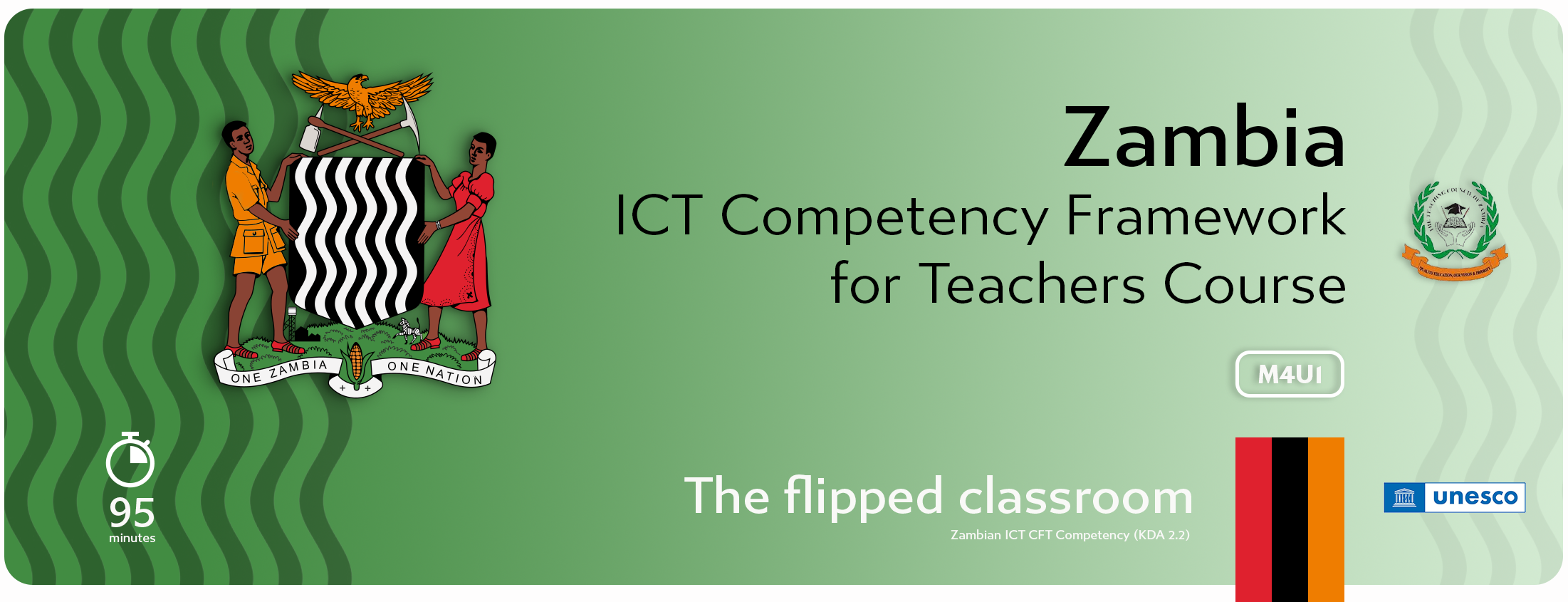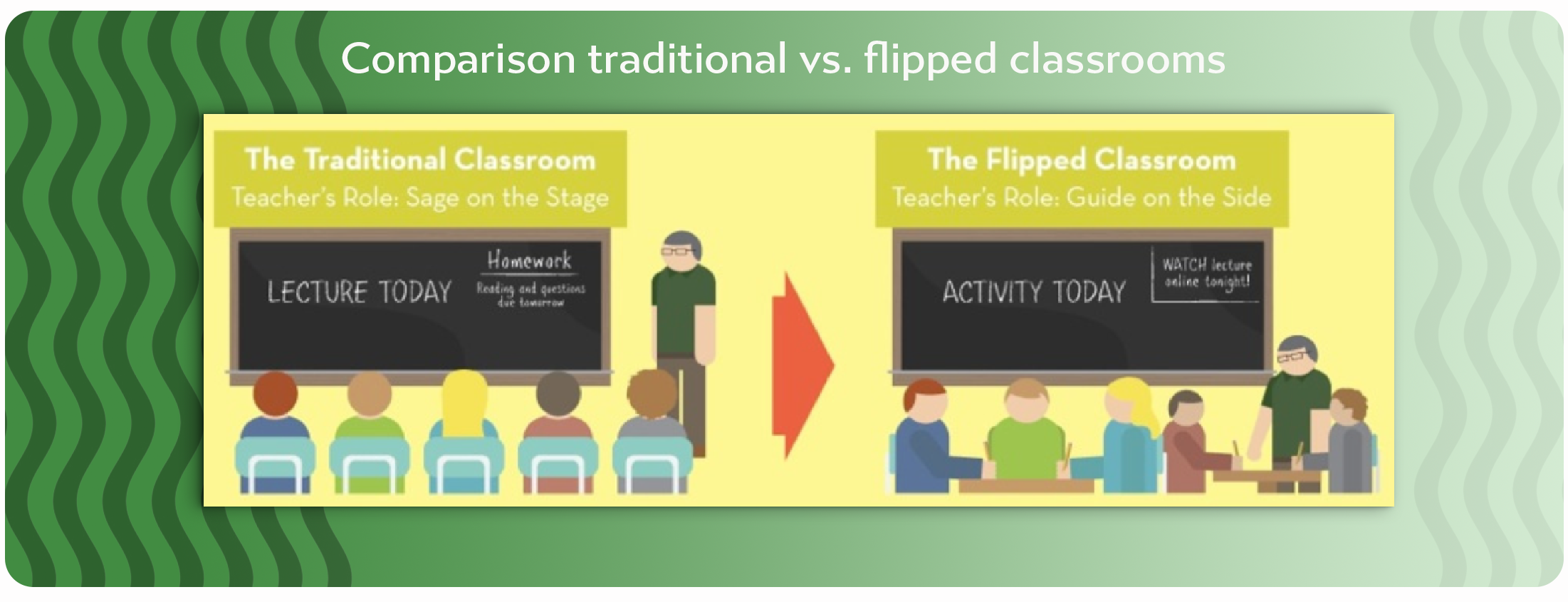Module 4 Unit 1


![]()

A Flipped classroom is a type of pedagogical tool that reverses the traditional learning environment by delivering instructional content, often online, outside of the classroom. It moves activities, including those that may have traditionally been considered homework, into the classroom. In a flipped classroom, students watch online lectures, collaborate in online discussions, or carry out research at home and engage in concepts in the classroom with the guidance of a mentor.
Watch the video below, which explains what a Flipped Classroom is:
Now that we understand what a flipped classroom is, we can move onto understanding why we would use this pedagogical tool…
Although as educators, we face challenges in any type of teaching that we do, there are always inventive ways for us to work around these challenges. Watch the video below which highlights some of the most common challenges as well as how to overcome them.
As we have seen, the Flipped Classroom model is an exciting and interesting tool. But how do we put this into practice? Watch the video below, which explains how you might Flip your Classroom:

Even though the content part of the lesson is done when you are not around, it is possible to engage with the students using social media messaging tools such as WhatsApp or Telegram. We have covered this in the social media module which is M2U5. To refresh your memory on this module click here.